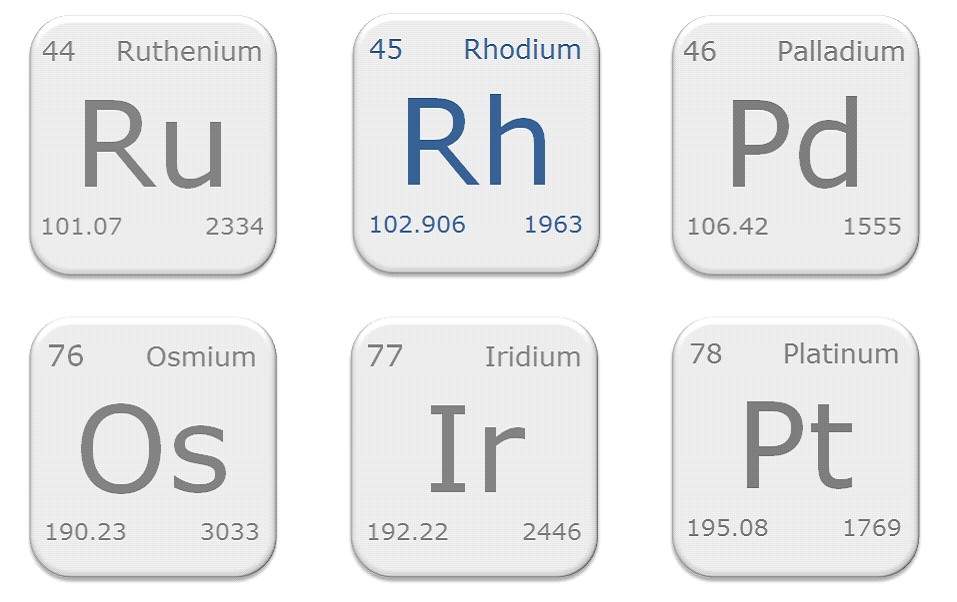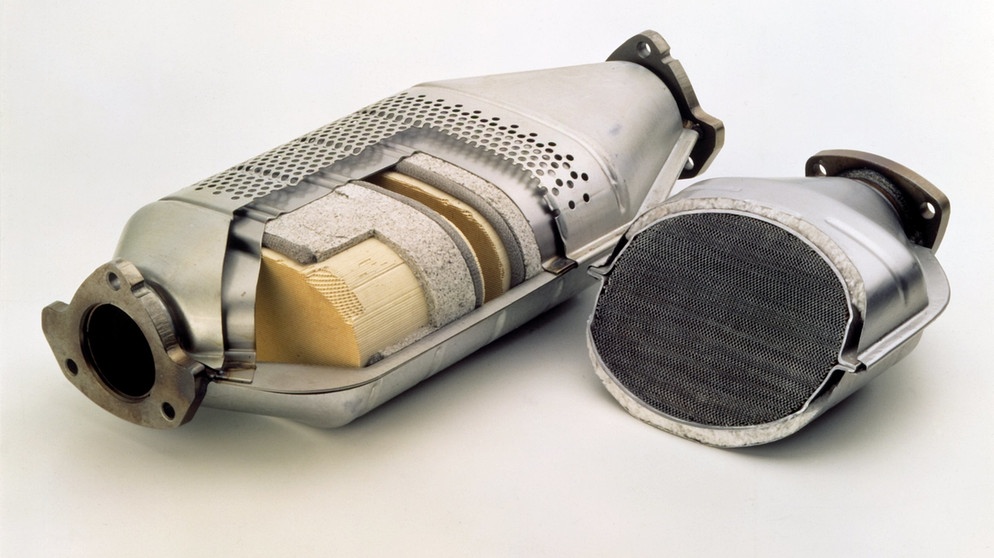RHODIUM, A "DISCREET" BUT BOOMING METAL ✨
POSTED BY ALICE
Rhodium is one of the six Platinum Group Metals (PGM’s) - platinum, palladium, rhodium, osmium, iridium, and ruthenium - and the first three on this list are well known to all involved in the catalytic converter market. It would, though, be fair to say that rhodium attracts a great deal less publicity and interest than its catalyst partners, platinum and palladium. Yet, of the three, rhodium has by far the highest activity for the removal of nitrogen oxides (NOx) from the exhaust; it has very high activity for the oxidation of hydrocarbons (HC) and carbon monoxide (CO), and it offers very good resistance to the poisons present in the exhaust stream.

Its “problem” is its rarity and high price. Rhodium is commonly obtained from the mining and refining of platinum and palladium; however, South African PGM producers (by far the commonest source of newly mined metals) typically extract a mix of metals comprising approximately 60% platinum, 30% palladium, and just 10% rhodium. Because of this low return rhodium is considered to be the rarest and most valuable precious metal in the world — well above both gold and silver.
A silver-white metallic element that is highly reflective and resistant to corrosion, rhodium is also used as a finish for jewelry, searchlights, and mirrors (due to its brilliance), it is alloyed with platinum for aircraft turbine engines and also in the chemical industry as a catalyst in the making of nitric acid, acetic acid and hydrogenation reactions.
No wonder than its high demand and high price - in April 2016, rhodium was at $740/troy ounce. By August 2019 this had risen to $5,000, twice the price of platinum and approximately seven times higher than palladium on the world market. All indications are that its price will continue to rise for a number of reasons:
- Despite vehicle sales not increasing, the trend away from diesel engines (which require less rhodium content for their catalysts) means that demand for the metal will continue to rise.
- Rhodium supplies will become scarcer over the next few years as PGM mines, particularly in South Africa, are mined out. The scarcity of any product will lead to higher prices for existing stocks.
- Emissions testing, especially since the infamous “Diesel-gate scandal" has become increasingly stringent in Europe and Asia. Higher catalytic specifications have been the result and hence higher demand for all PGMs.
- Electric hybrids, which will take an increasing share of the vehicle market require higher PGM loadings.
- Unlike platinum and palladium, relatively little investment has taken place in rhodium, meaning available stocks are low.
Market analysts share the belief that the price for rhodium will only move in one direction. For example, Matt Watson, president at Precious Metals Commodity Management, said that he does not expect to see the demand for the precious metal slowing, adding, “Because of higher environmental standards, they are throwing more and more rhodium in converters. I don’t see the big automakers stopping this trend anytime soon and the supplies they need are just not there.”

Catalytic Converter
No wonder, too, therefore, that there is a greater than ever need for the recycling of rhodium. There is a significant gap of approximately 25% between supply and demand for the metal on the world markets, and this deficiency can only be replenished by recycling, primarily from spent auto-catalysts. Yes, we all know that this recycling can be a profitable business for the many players in the industry, especially when we consider the metal prices, - but at the same time, we must never forget the environmental benefits it delivers.
More recycling ultimately means cleaner vehicles and less resource-depleting mining in the future. Fortunately, recycling technology is generating more cost-effective recovery methods, and investment in the business has increased significantly, reflecting the industry’s growth, overall size, and increasing professionalism.

























